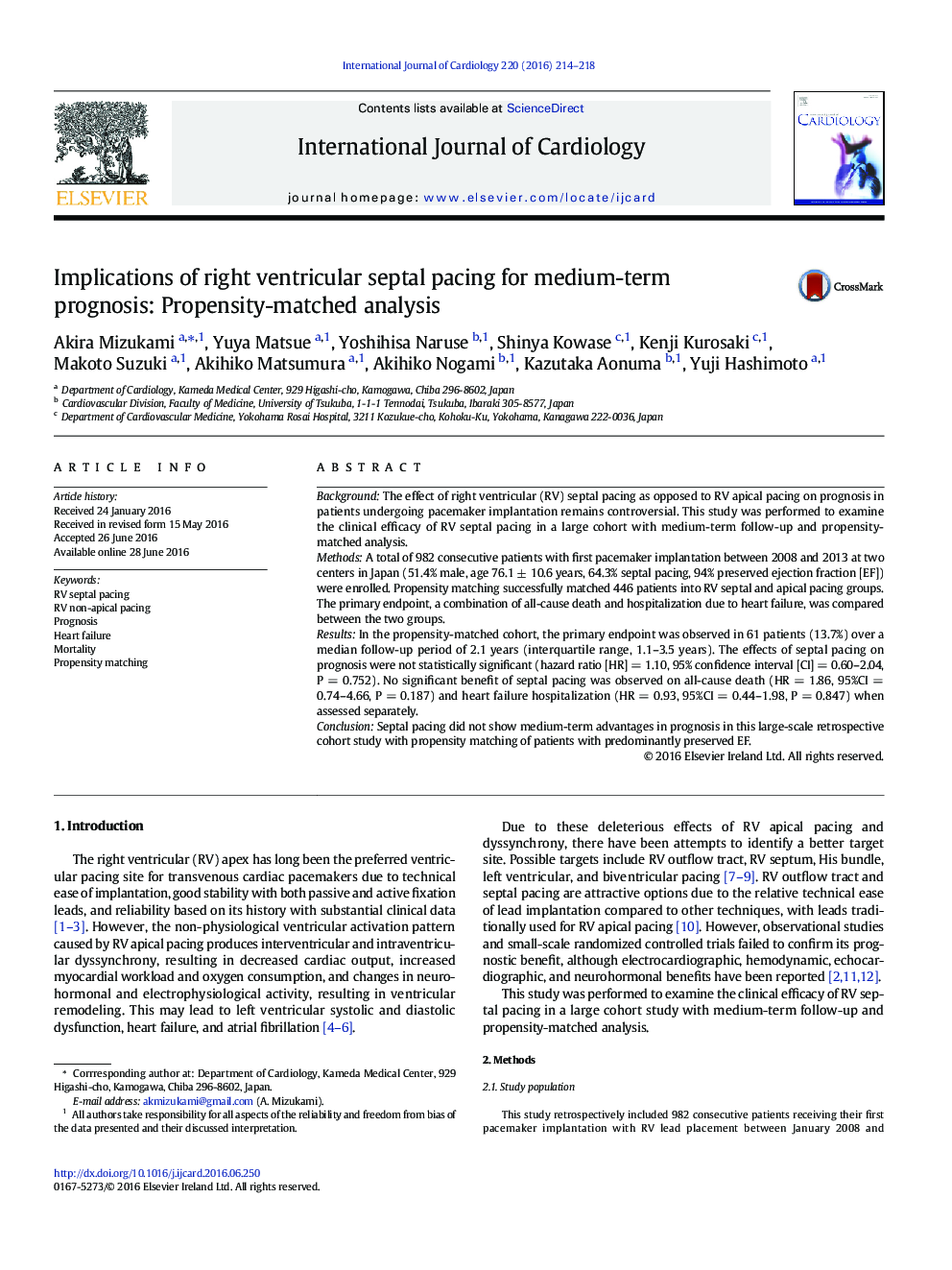| Article ID | Journal | Published Year | Pages | File Type |
|---|---|---|---|---|
| 5963451 | International Journal of Cardiology | 2016 | 5 Pages |
BackgroundThe effect of right ventricular (RV) septal pacing as opposed to RV apical pacing on prognosis in patients undergoing pacemaker implantation remains controversial. This study was performed to examine the clinical efficacy of RV septal pacing in a large cohort with medium-term follow-up and propensity-matched analysis.MethodsA total of 982 consecutive patients with first pacemaker implantation between 2008 and 2013 at two centers in Japan (51.4% male, age 76.1 ± 10.6 years, 64.3% septal pacing, 94% preserved ejection fraction [EF]) were enrolled. Propensity matching successfully matched 446 patients into RV septal and apical pacing groups. The primary endpoint, a combination of all-cause death and hospitalization due to heart failure, was compared between the two groups.ResultsIn the propensity-matched cohort, the primary endpoint was observed in 61 patients (13.7%) over a median follow-up period of 2.1 years (interquartile range, 1.1-3.5 years). The effects of septal pacing on prognosis were not statistically significant (hazard ratio [HR] = 1.10, 95% confidence interval [CI] = 0.60-2.04, P = 0.752). No significant benefit of septal pacing was observed on all-cause death (HR = 1.86, 95%CI = 0.74-4.66, P = 0.187) and heart failure hospitalization (HR = 0.93, 95%CI = 0.44-1.98, P = 0.847) when assessed separately.ConclusionSeptal pacing did not show medium-term advantages in prognosis in this large-scale retrospective cohort study with propensity matching of patients with predominantly preserved EF.
